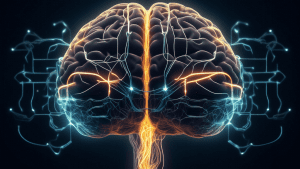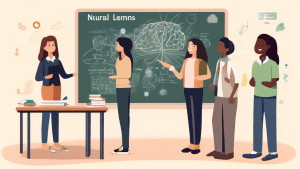Language models have revolutionized the field of artificial intelligence and natural language processing. Among them, Language Model (LLM) stands out for its profound impact on various applications. But who are the masterminds behind the creation of LLM? Let’s delve into the rich history and origins of LLM to understand the key contributors and milestones that shaped its development.
Early Beginnings of Language Models
The foundation for Language Models can be traced back to early natural language processing (NLP) research in the mid-20th century. Researchers like Noam Chomsky laid important theoretical groundwork with his generative grammar. However, practical implementations of language models began to gain traction in the 1980s and 1990s.
In these formative years, the focus was primarily on rule-based systems and statistical models. The introduction of hidden Markov models (HMMs) and later, n-gram models, played crucial roles in advancing the field. However, it wasn’t until the advent of deep learning that language models experienced exponential growth in both capability and sophistication.
The Birth of Modern LLMs: OpenAI‘s GPT Series
OpenAI, a research organization focused on developing and promoting friendly AI, is credited with creating one of the most influential Language Models in recent history – the GPT series. The first entry in this series, GPT (Generative Pre-trained Transformer), was introduced in 2018. OpenAI‘s researchers, including Alec Radford, Karthik Narasimhan, Tim Salimans, and Ilya Sutskever, were instrumental in developing GPT-1.
The GPT series builds on the Transformer architecture introduced by Vaswani et al. in 2017. The key innovation of Transformers is the attention mechanism, which enables models to weigh the importance of different words in a sentence, thus capturing context more effectively than previous architectures.
Subsequent Iterations: GPT-2 and GPT-3
Following the success of GPT-1, OpenAI released GPT-2 in 2019, showcasing a significant leap in performance and capability. GPT-2, with 1.5 billion parameters, demonstrated the potential of large-scale pre-training followed by fine-tuning on specific tasks. Despite initial concerns about misuse, OpenAI eventually opted for a phased release to balance accessibility with safety considerations.
In June 2020, OpenAI unveiled GPT-3, which dwarfed its predecessors with a staggering 175 billion parameters. GPT-3’s remarkable ability to generate coherent and contextually relevant text across diverse topics further cemented its status as a groundbreaking development in AI.
The Visionaries Behind the Success
The creation and development of GPT models were driven by a collective effort of dedicated researchers at OpenAI. Key figures include:
- Alec Radford: A prominent researcher at OpenAI who played an instrumental role in the development of the GPT series.
- Ilya Sutskever: Co-founder and Chief Scientist at OpenAI, Sutskever is renowned for his contributions to deep learning and neural network research.
- Karthik Narasimhan and Tim Salimans: Researchers who contributed significantly to the conception and development of the original GPT model.
Looking Ahead: The Future of LLMs
The success of GPT-3 has spurred ongoing advancements in Language Models, with numerous organizations and research groups exploring even larger and more capable models. The potential applications range from enhancing human-computer interaction to advancing fields such as medicine, finance, and creative industries.
As we look to the future, ethical considerations and responsible deployment will play a crucial role in shaping the trajectory of Language Models. Ensuring equitable access, transparency, and mitigating potential harms remain critical challenges that need collective attention.
For more information on the development of GPT and the visionaries behind it, you can explore OpenAI‘s official website.






No comments! Be the first commenter?